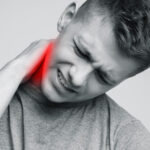Have you been told your joint pain is “just perimenopause”?
It’s a frustrating answer many women hear. Whether it’s knee pain, hip stiffness, or unexplained aches, the blame often gets pinned on hormonal changes. Doctors may point to declining estrogen levels as the culprit, claiming it causes cartilage loss and inflammation.
But here’s the truth: cartilage and tissue changes happen to everyone as we age — it’s like getting wrinkles on your face. Wrinkles don’t mean your skin is broken. And perimenopause doesn’t mean your joints are doomed.
So what’s really going on? Let’s dig deeper.
What’s the Connection Between Perimenopause and Joint Pain?
Hormonal changes during perimenopause do affect the body. Estrogen plays a role in tissue health, and lower levels can influence inflammation. That part is true.
But here’s the bigger picture: aging brings natural changes to cartilage, tendons, and joints — for both men and women. The difference? Women in perimenopause are often told their pain is only about hormones, while the real issue might be hiding in plain sight.
The Problem With a “One-Size-Fits-All” Diagnosis
When pain gets blamed on perimenopause (or arthritis), it often leaves you feeling powerless — like your only options are medications, injections, or waiting until things get “bad enough” for surgery.
But pain doesn’t appear in a vacuum. Here are some overlooked factors that can mimic “hormonal” or “arthritic” pain:
- We sit more and move less.
- We fall into the same posture patterns every day.
3. Our joints lose mobility and tissues tighten.
Think of it like a rusty hinge. The rust isn’t the real problem — it’s the lack of movement that makes it harder to open and close. Your joints work the same way.
The result? Stiffness and discomfort that look like arthritis or hormone changes, but are actually rooted in poor mechanics and mobility loss.
Why Orthopedic Issues Are Overlooked in Perimenopause
Here’s where many healthcare providers miss the mark: they see joint pain, look at imaging, and if nothing obvious shows up, they assume it must be hormones or “just aging.”
But imaging doesn’t tell the whole story. Degenerative changes show up even in people without pain. Just because your MRI shows cartilage wear doesn’t mean that’s why your knee hurts.
At mPower Physical Therapy in Dallas, TX, we see this all the time:
- Hip pain that turns out to be coming from the back.
- Knee pain that’s really driven by weakness around the hip.
- Shoulder pain caused by postural stress in the neck.
And yes, sometimes what looks like “perimenopause joint pain” is actually an orthopedic problem that can improve dramatically with the right care.
Don’t Let Labels Like “Perimenopause” Stop You
The good news? Your body is resilient. With the right movement, balance, and evaluation, you can feel better — at any age.
Instead of chalking everything up to perimenopause or arthritis, it’s worth asking: what’s the root cause of this pain? Could it be mechanics, mobility, or strength?
At mPower, we specialize in uncovering those answers. And we do it without guessing.
───────────────────────────────
Take the Next Step
If you’ve been told your pain is “just perimenopause,” don’t stop there. You deserve real answers.
That’s why we offer a FREE Discovery Visit — where you’ll sit down with one of our specialists, talk through your symptoms, and learn if your pain is really coming from perimenopause… or if something else is at play.
Claim your Free Discovery Visit here → mPower Physical Therapy Free Discovery Visit
Stop living with frustration and unexplained pain. Let’s find the real reason for your discomfort — and get you back to moving, feeling, and living better.





